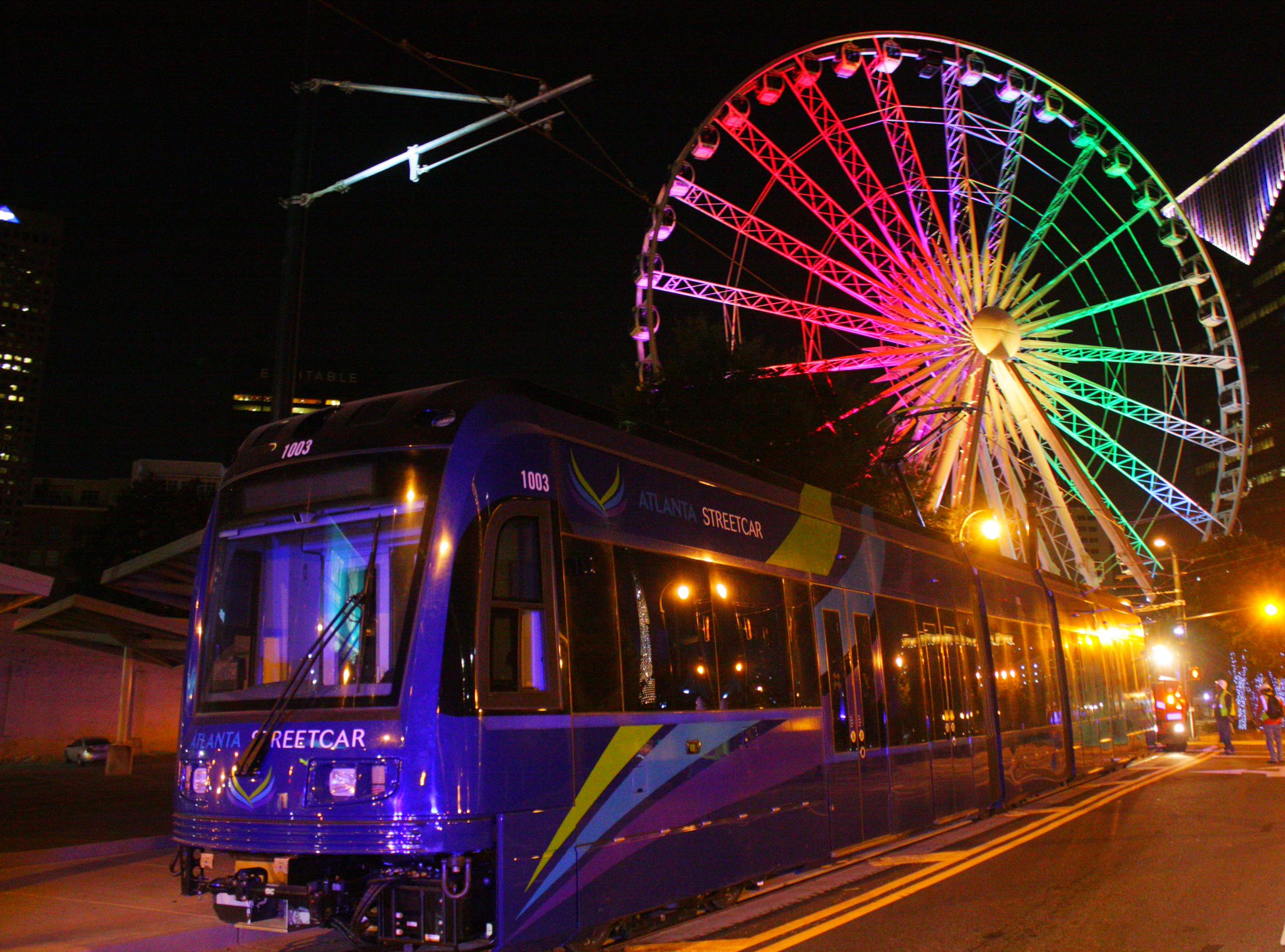| Portion of Atlanta's Skyline |
It's true that our skyline is a stunning sight and buildings like the High Museum and Fox Theatre are beautiful, but other than that our buildings are lacking when compared to other American cities. Even along Peachtree Street, refurbished strip malls line some of our most important intown districts. While paint can do an old building wonders, its not necessarily the most aesthetically pleasing piece of architecture our city can offer. And recently, Curbed Atlanta highlighted some of the city's new high rises in the pipeline. They showed a comparison between two apartment buildings being built in Buckhead and Midtown, and both buildings looked remarkably similar. While still nice buildings, this is not the kind of stunning new architecture that will set us apart.
| The High Museum |
When looking at the High Museum, the entire focus of the building seems to be on its purpose, a world-class art museum. People are given an incredible experience of beautiful art, and the museum integrates its architecture perfectly into that purpose. Instead of getting carried away with the minute details the building maintains its focus on art and your experience with art throughout it. While seeing the world's finest compositions and exhibits, you can see how the skylights in the ceiling, the open concept, the spiral staircase, and glass windows all add to the art. But in the High, you won't find yourself complaining about getting lost, weird layouts, or an awkwardly placed atrium because the focus of the architecture isn't distracted on the building itself, but zoned in on the art and your interaction with it.
By making new buildings and structures in Atlanta focus on its purpose with the people who will use it rather than the many other details about the building, Atlanta will find more architecturally significant buildings being built. For instance, instead of becoming distracted by all of the different components that can take away from a buildings purpose, maintaining a constant focus on its use will make the building more appealing. Then, you can begin to add in the other details that make buildings like the High Museum stand out. Its purpose is clear and the architecture around it adds to that purpose rather than taking away from the art.
As an example, if the city was replacing an old library with a new state-of-the-art library, by focusing on its main components: its books, computers, and quiet areas, the city can create a building people will find useful. Then, the architects can focus on adding details that further add to people's experience. Large windows that let in Atlanta's sunlight, an open concept centered around a central meeting space with different nodes expanding out from this space, and indoor floor-to-ceiling windows that let people see other parts of the library would make this a place not only useful to Atlanta citizens but also a place that they would want to be and stay in.
| Dallas Architecture |
So Atlanta can try and take after Dallas and become a model city for stunning architecture, or we can take our own path by focusing on the people that already make this city great. By focusing on the people's needs, architects can then design places that Atlantans would want to live, work, and play in. Significant and expensive architecture will add to Atlanta's vibrancy, but I believe our architecture will be the most successful by also focusing on the people. Atlanta needs to create people places.



